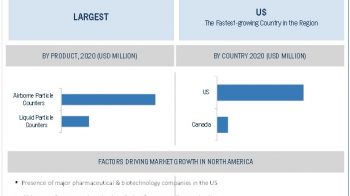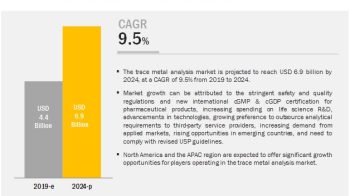Driver: Favorable public & private initiatives for environmental conservation and public awareness
A number of favorable initiatives have been taken by government as well as non-government organizations and private sector to reduce and cut down air pollution through means of public awareness campaigns and programs. Such programs and initiatives not only help to raise awareness among common people, but also play an important role to bring the attention of international organizations to the current and future threat of air pollution that the world is facing.
Many government and non-government organizations work continuously to bring the attention of national and international societies to the devastating effect of air pollution on the health of living beings and to the environment. Prominent public organizations involved in driving public awareness on environmental impacts of air pollution include the EPA (United States Environmental Protection Agency), Clean Air in London (London), Coalition for Clean Air (California, US), Sierra Club (US), Union of Concerned Scientists (US), Mom’s Clean Air Force (US), Global Action Plan (International), Little Ninja (UK), Earthjustice (US), and German VCD (German Sustainable Transport Association).
Download PDF Brochure@
https://www.marketsandmarkets.com/pdfdownloadNew.asp?id=183784537
For example, In April 2021, United Nations Environment Programme (UNEP) partnered with the Republic of Korea’s Capital Metropolitan Area, which includes Seoul, Incheon and Gyeonggi province, to help them expand their efforts to tackle air pollution in the region. In September 2019, 3M and Clean Air Asia which is an international non-governmental organization signed a collaboration agreement to provide science-based air quality solutions for New Delhi, India, and Metro Manila, Philippines.
According to the agreement, 3M will assist Clean Air Asia, over the course of next 5 years, in its efforts to assess baseline air quality conditions, design capacity-building programs for air quality management, implement awareness and education campaigns, develop Clean Air Action Plans with selected city and district governments, and measure the resulting impact on air pollution levels.
Restraint: High product cost
The high installation cost and high maintenance cost of conventional air monitoring system hinders the growth of the market. For instance, the installation of reference air quality monitoring stations is expensive and costs anywhere between USD 100,000–200,000 for a single station. In India, the cost of a single AQM station is estimated to be between USD 0.21–0.35 million (excluding the costs of yearly maintenance). The maintenance cost of pollution-monitoring stations is also high (up to 10% of the installation cost for overall maintenance during a 10-year period).
High costs associated with the purchase, establishment, and maintenance of AQM sensors as well as high establishment costs for AQM stations are further aggravated by the implementation of stringent pollution control policies across mature markets that require regulatory compliance for effective air pollution monitoring as well as data collection and data surveillance. Therefore, the premium pricing of advanced monitoring products, as well as the high installation costs of AQM stations, are expected to restrain their optimal market growth—though mainly across emerging countries—during the study period.
Opportunity: Continuous R&D and technological advancements
The continuous research and development, and commercialization of advanced AQM systems (such as miniaturized devices, nanotechnology-based systems, infrared spectroscopy, and remote-sensing instruments) are expected to offer significant growth opportunities for prominent as well as emerging players in the AQM industry. Consequently, various industrial players and research organizations are increasingly focusing on developing and commercializing advanced AQM products. For instance, nanotechnology based AQM products offer several procedural benefits, such as real-time monitoring capabilities, device miniaturization, increased analytical efficacy, and affordable manufacturing.
In the same line of advancements, a low-power gas sensor nano-chip has been developed by a team of international researchers making possible the development of personal air-quality monitoring devices. This nanochip sensor is based on a chemical-sensitive field-effect transistor (CS-FET) platform which is further based on 3.5-nanometer-thin silicon channel transistors. (Source: American Association for the Advancement of Science journal). Pipeline development and the increased market availability of technologically advanced air pollution monitoring systems are expected to offer potential opportunities for market growth in the coming years.
Challenge: Slow implementation of air pollution control reforms
One of the major challenges associated with the air quality monitoring systems market is the slow implementation of air pollution regulations. Several emerging countries (such as China and India) have been reported to be slow in implementing stringent environmental pollution monitoring norms during the past decade. For example, in April 2021, government of India postponed the deadline for thermal powerplants to install Flue Gas Desulphurization units to cut the emissions of sulfur dioxide, and allowed utilities that miss the new target to continue operating after paying a penalty, according to a government notice.
The initial deadline was set to 2017 but now has been postponed up to 2022 for plants near populous region and capital New Delhi, and up to 2025 for facilities near less populated regions. Similarly, a dearth of well-trained and skilled technical professionals to undertake pollution monitoring and control measures and limited R&D infrastructure to develop affordable air pollution monitoring technologies in developing countries are further hampering the implementation of effective pollution monitoring and control reforms.
Request Sample Pages@
https://www.marketsandmarkets.com/requestsampleNew.asp?id=183784537
The Asia Pacific market is expected to grow at the highest CAGR during the forecast period
On the basis of region, the air quality monitoring systems market is segmented into North America, Europe, Asia Pacific, Latin America, and the Middle East & Africa. The asia-pacific market is expected to register the highest growth in the forecast period. Countries in this market are witnessing growth in their GDPs and a significant rise in disposable income among the middle-class population. This has led to increased expenditure by various regional government on air quality monitoring activities, modernization of industrial and public infrastructures, and rising penetration of cutting-edge environmental monitoring technologies. All of these factors contribute to the high CAGR of the region.

